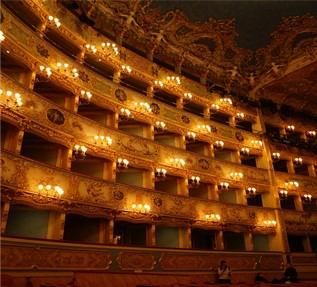Gina Argento is the owner of Broadway Stages in New York. In the following article, Gina Argento discusses how theater has impacted our culture, from its beginnings in ancient Greece to today’s digital age.
The theater has been a part of the human landscape for thousands of years. Traditional staged performances began in Ancient Greece, and over time the theater has been used not only as a way to connect people of different statuses and experiences, but also to make the inaccessible accessible, by way of religious education, eye-opening criticism, and rich storytelling.
Gina Argento of Broadway Stages in New York explains more about the impact of theater arts through the ages below.
Greek Theater
Greek theater originated in the marketplaces and is often attributed to the poet Thepsis in 534 BCE. Not only did he develop the first traveling theater troupe, but also gave us the genre of Greek Tragedy, one that has been commonly emulated, praised, and even parodied ever since.
Gina Argento of Broadway Stages in New York notes that one of the key aspects of Greek theater was the combination of performance and worship, especially in respect of gods such as Dionysus, whose idol would even be brought forward to preside over routines. The gods were honored by the chorus, a group of actors who performed a ritual aspect of the play, and could often be up to 50 people strong.
Gina Argento of Broadway Stages in New York says that Greek theater provided audiences a unique way to engage with the gods. The growing advances in stage design and props during this era helped to slowly build onto the immersive nature of theater as a whole.
Medieval Mystery Plays
Gina Argento of Broadway Stages in New York says that the most popular form of theater in the medieval period, during the 14th and 15th centuries, were the mystery plays. Unlike the mystery genre we are familiar with today, these mystery plays were based upon the Bible and the “mysteries” of God. The performances took the form of small dramatizations, all the way from Genesis and Adam and Eve to the Last Judgement.
The dramas were most commonly funded by the merchant’s guilds of each city, which were, ironically, also referred to as “mysteries”. Not only did this provide a way for the guilds to show their wealth, power, and influence, but it also formed an effective method of advertising. For example, the gifts from the three wise men in the nativity may have been fashioned by the local Goldsmith’s Guild.
For the most part, Gina Argento of Broadway Stages in New York says that the actors in the medieval mystery plays were amateur dramatists, often selected from the local community. This made attending the mystery performances a social event, although more importantly, it provided a way for the populace to be able to understand the Bible.
The text read and used in worship was in Latin, and the vast majority of people could not read in the first place. Therefore, mystery plays allowed them to access the content and stories in common English, effectively bridging the gap between civilians and the clergy.
Shakespearean Theater
One of the most common things that people will think about when it comes to the art of theater throughout history is the era of Shakespeare.
Although he was the most famous playwright of his time, Gina Argento of Broadway Stages in New York says that there were countless other dramatists in the Tudor and Jacobean period creating plays and being sponsored by various members of nobility. Troupes would often be referred to in relation to their sponsors, such as Shakespeare’s company, which was the Queen’s Men under Queen Elizabeth I and the King’s men under King James I.
The theater was where the upper and lower classes would mix, both watching the same play in the same space, albeit with far comfier, less dirty provisions for richer clientele. The plays brought people together through common themes like love, loss, and belly-laughing comedy sketches.
Theatergoers could choose to watch one of three types of dramatization: a comedy (where the characters usually marry at the end), a tragedy (where everyone dies at the end), or a history play, which was based (although loosely, in some cases) on prominent historical figures.

Victorian Theater
Gina Argento of Broadway Stages in New York explains that the Victorian Era was when the theater began to evolve into what we know it as today. From 1840 through the end of the century, theatres opened while populations expanded as a way to entertain the masses. This was the period of traveling shows, grand operatic performances, music halls, and variety theater development.
This period saw the emergence of the theme of a celebrity being associated with the theater, with audiences beginning to attend shows simply for a certain member of the cast, with some actors and actresses making overseas tours to gain fame, publicity, and wealth.
Technological advances also meant that lighting and staging became more elaborate, making the theater a much more immersive experience. This, paired with sensational adaptations of popular novels, such as the works of Charles Dickens, and often-crafted melodramas helped to captivate audiences through emotion, more so than themes or overall narratives.
Modern Productions
The emergence of modern theater began at the start of the 20th century when a new wave of thinkers began to change the space. Plays started to become much more critical of key issues within society and deal with far more complex issues connected to the relationship between the performer and spectator.
This is particularly true in the case of the “fourth wall”, created by André Antoine, separating the stage from those watching it, with the illusion only falling if a character were to “break” this metaphorical barrier between them.
However, Gina Argento of Broadway Stages in New York says that as time went on, up to the present day, artistic, experimental movements of theater have been replaced with a much more materialistic mindset on the performing arts. Large spaces such as on Broadway will often stick to tried and tested popular productions, while smaller spaces cater to niche plays and performances, often not even in theaters at all but reclaimed spaces.
The Future of Theater Arts
Gina Argento of Broadway Stages in New York states that it is unclear where theater arts will go from here, especially with the advent of more advanced technology such as VR and AI that could even provide an immersive theater experience within one’s own home.
However, if there is one thing that has remained in focus through time, it is the common thread of shared human experience that truly brings the theater alive, no matter the performance.









